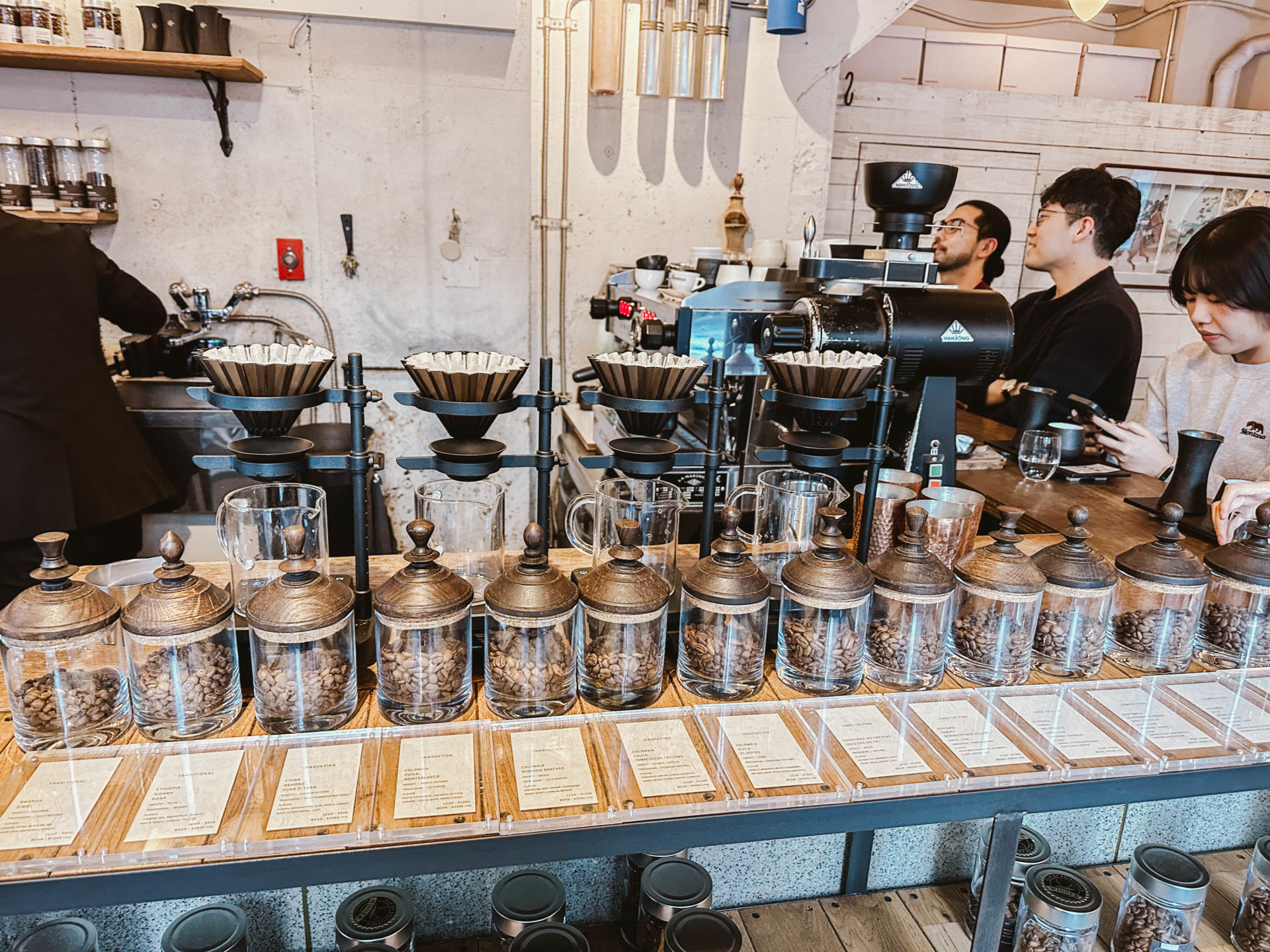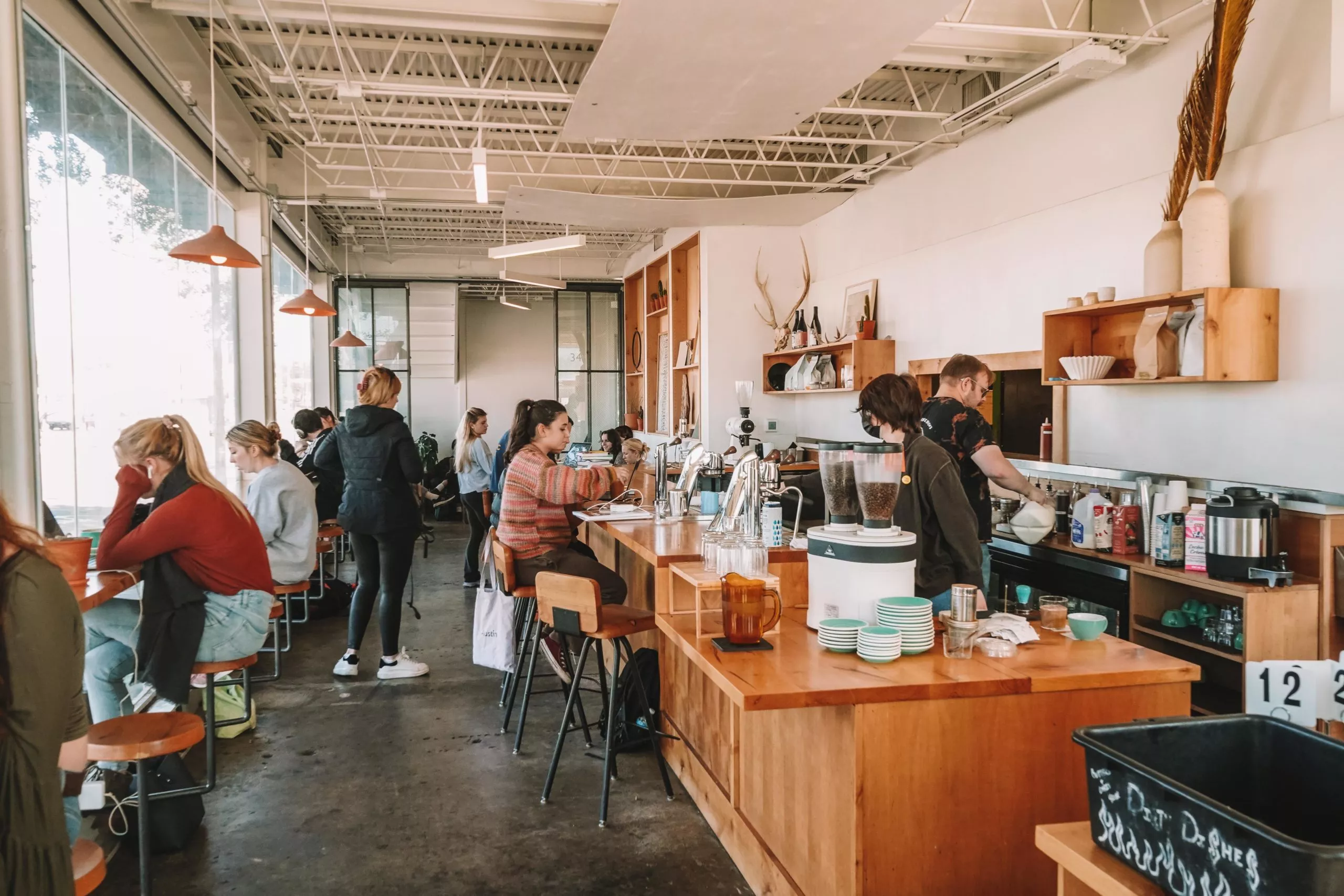The Best Coffee Shops in Brooklyn to Please Your Coffee Cravings
The Best Coffee Shops in Brooklyn to Please Your Coffee Cravings
Blog Article
Discovering the Ideal Brewing Approaches for Perfect Coffee
Discovering the numerous brewing methods for coffee can substantially raise one's recognition for this complicated drink. Each method, from the durable richness of the French Press to the precise accuracy of pour-over brewing, provides a distinct flavor experience that caters to diverse tastes buds.

French Press Developing Method
The French Press developing technique is a classic method that allows coffee enthusiasts to extract rich and full-bodied flavors from their coffee grounds. Brooklyn Coffee Shops. This approach, likewise referred to as a press pot or bettor pot, includes soaking coarsely ground coffee in hot water before separating the grounds with a steel or nylon mesh filter
To prepare coffee using a French Press, start by including coarsely ground coffee to the carafe, normally at a proportion of 1:15 coffee to water. After steeping, strongly press the plunger down to separate the grounds from the made coffee.
The result is a robust and fragrant mug that preserves the natural oils from the coffee grounds, providing a distinctive texture and taste profile. This brewing strategy is preferred for its simpleness and capability to showcase the distinct qualities of different coffee beans. The French Press invites experimentation with work dimension, steep time, and coffee-to-water proportions, permitting customers to customize their brewing experience.
Pour-Over Technique Explained
Pour-over brewing is a precise technique that enables coffee enthusiasts to work out control over every element of the brewing procedure, resulting in a vivid and clean mug of coffee. This technique entails putting warm water over coffee grounds in a filter, permitting the water to remove tastes gradually as it travels through.
To start, it is vital to choose premium, freshly baked coffee beans, preferably ground to a medium-coarse uniformity. The option of water temperature is critical; preferably, it should be in between 195 ° F and 205 ° F(90 ° C to 96 ° C) to optimize removal without scalding the coffee.

The complete brew time must range from 3 to four mins, relying on the desired stamina and taste profile. The pour-over technique, precious for its clearness, supplies a nuanced mug that highlights the coffee's distinct characteristics, making it a preferred amongst purists and lovers alike.
Coffee Fundamentals
Coffee developing stands in comparison to the pour-over technique, supplying a focused shot of coffee that showcases vibrant tastes and rich crema. This developing technique counts on requiring warm water with finely-ground coffee under high stress, typically around 9 bars. The outcome is a small, intense quantity of coffee that offers as the foundation for various espresso-based drinks, such as macchiatos, cappuccinos, and lattes.
Trick elements of a successful coffee shot include grind dimension, tamping stress, water temperature, and extraction time. The work size must be great to assist in ideal extraction, while regular tamping ensures also water circulation with the coffee grounds. Water temperature need to preferably range between 90 to 96 degrees Celsius to stay clear of under-extraction or over-extraction, which can lead to undesirable tastes.
Coffee equipments been available in various types, from manual bar devices to automated systems, each satisfying different ability levels and choices. Mastering the art of espresso developing can be a satisfying experience, allowing coffee lovers to value the complexity and deepness of flavors that this technique can produce. Inevitably, the espresso acts as a functional base for numerous coffee productions.
Cold Brew Refine
Cold brew coffee has obtained appeal for its smooth, mellow taste profile and low level of acidity, making it an attractive option for many coffee enthusiasts. The chilly brew procedure is distinct from typical brewing approaches, utilizing a soaking method that removes tastes over an extensive duration without warmth.

As soon as steeping is total, the coffee is filteringed system to remove the premises, resulting in a concentrated mixture that can be diluted with water or milk before offering. The low developing temperature lessens acidity and bitterness, generating a pleasant and refreshing beverage.
Cold brew can be served over ice, blended into shakes, or appreciated straight, making it versatile for numerous choices. With its unique flavor and smooth finish, the cold brew process has solidified its place among the favorite brewing methods for coffee lovers.
Aeropress Benefits
While numerous brewing techniques have their special qualities, the Aeropress stands apart for its adaptability and simplicity of usage. This ingenious tool permits coffee enthusiasts to experiment with various brewing specifications, such as work dimension, water temperature level, and soaking time, allowing the creation of a customized mug of coffee customized to specific choices.
One substantial advantage of the Aeropress is its mobility. Lightweight and small, it is a perfect choice for tourists and outside fanatics that want a high quality brew on the go. Additionally, the Aeropress is created from resilient products, guaranteeing it withstands the rigors Our site of traveling.
The developing process itself is extremely simple, making it accessible for both newbie and skilled coffee enthusiasts - Cafe Bistro. With a fast developing time of approximately one to 2 minutes, the Aeropress generates a concentrated coffee similar to espresso, permitting a rich taste profile
Additionally, the Aeropress is simple to tidy, calling for marginal maintenance compared to conventional brewing approaches. Its adaptability encompasses numerous coffee styles, including cool brew and even nitro coffee, making it a valuable enhancement to any type of coffee lover's arsenal. On the whole, the Aeropress combines quality, benefit, and flexibility, making it a top selection for coffee this hyperlink fanatics.
Conclusion
The expedition of various coffee developing techniques exposes unique characteristics and flavor accounts that deal with varied preferences. Techniques such as the French Press, pour-over, espresso, cool mixture, and Aeropress each deal one-of-a-kind advantages, adding to the overall coffee experience. Proficiency of these approaches enables the personalization of stamina, body, and flavor, ultimately enhancing recognition for the beverage. Involving with these brewing techniques promotes a deeper understanding of coffee's complexity and capacity for satisfaction.
To prepare coffee making use of a French Press, begin by adding coarsely ground coffee to the carafe, normally at a ratio of 1:15 coffee to water.Coffee developing stands in comparison to the pour-over approach, using a concentrated shot of coffee that showcases strong flavors and abundant crema. Grasping the art of espresso developing can be a satisfying see post experience, allowing coffee fanatics to appreciate the intricacy and depth of tastes that this method can generate. Its convenience prolongs to various coffee designs, including chilly brew and also nitro coffee, making it a valuable addition to any kind of coffee fan's arsenal.The exploration of numerous coffee developing approaches discloses distinctive attributes and flavor accounts that provide to diverse preferences.
Report this page